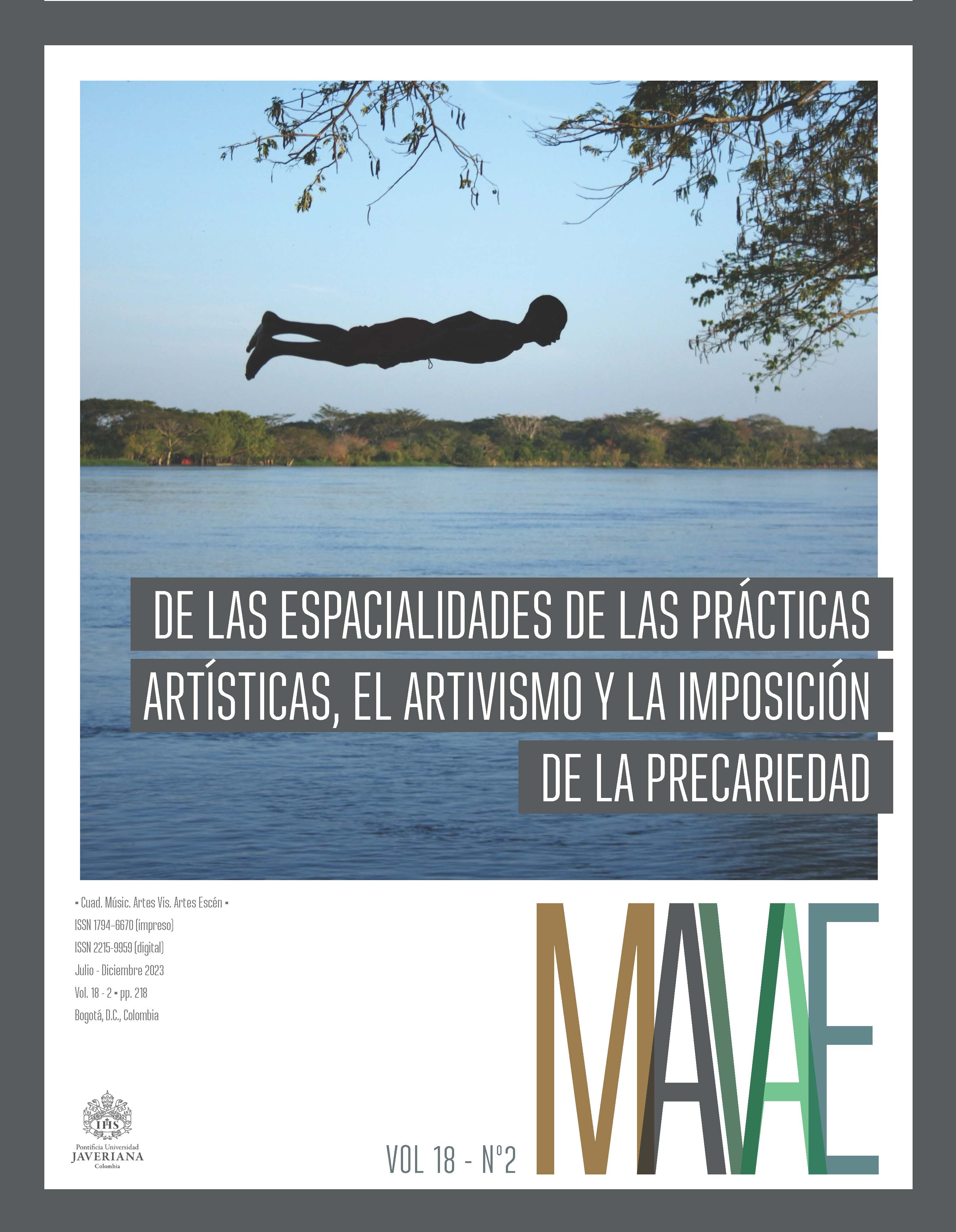Resumen
El artículo da continuidad a la sistematización del material recolectado en investigación de campo realizada por la autora con grupos de teatro colombianos, con el objetivo de investigar su modo de producción y creación. El estudio, concebido y preparado remotamente, consiguió publicar sus primeras preguntas de investigación e hipótesis en la revista Urdimento en 2022. En el texto que ahora presentamos, se parte de un análisis comparativo del campo temático y metodológico de las obras en cartelera durante febrero y marzo de 2022, en las ciudades de Bogotá y Medellín. A continuación, se aborda el Teatro Tespys, situado en la ciudad de El Carmen de Viboral, a 50 kilómetros de Medellín. Además de la observación directa, se hicieron entrevistas, consulta del acervo del grupo y de páginas virtuales, con el objetivo de reunir información que permitiera analizar su desempeño a partir de las prácticas concebidas y realizadas por el colectivo. El estudio se concentra en el proyecto de recorridos de Tespys por los pueblos del interior de su región, con obras y prácticas creativas orientadas a la descolonización. A partir de la crónica escrita por Flora Quijano Upegui, integrante del grupo, el artículo identifica las condiciones de producción y los procedimientos pedagógicos practicados por el grupo junto a poblaciones aisladas, la mayoría con memorias vivas del terror vivido en los años 1980, y reflexiona sobre la noción de teatro comunitario en Brasil.
Borba, Juliano. 2018. Teatro de vizinhos: comunidade, convívio e celebração. Programa de Pós-graduação em Teatro. Tese de doutorado. Universidade do Estado de Santa Catarina.
Bourriaud, Nicolas. 2009. Estética Relacional. São Paulo: Martins.
Britos, Marlene Cristiane Gomes. Arte e cultura popular na América Latina: o teatro político do MST (Brasil) e o teatro comunitário do
Nuestra Gente (Colômbia). Dissertação de Mestrado. Programa de Pós-Graduação em Integração da América Latina, PROLAM/
Universidade de São Paulo, 2009.
Cortés, Raúl. Teatro Experimental Fontibón: poética, resistencia y mistério (1979-2019). Medellín, Fundación Teatro Experimental Fontibón
/ MinCultura, 2018. https://issuu.com/experimentalfontibon/docs/maqueta_libro_final_dic_7. Acesso em: 13/01/2022.
Cruz, Hugo (org). 2016. Arte e comunidade. Porto: Fundação Calouste Gulbenkian.
Giacchè, Piergiorgio. 1991. Lo spettatore participante: contributi per un’antropologia del teatro. Milano: Guerini.
Jaramillo, María Mercedes y Osorio, Betty. Teatro en Colombia. ¿Qué papel le asigna al método de la creación colectiva en la historia
del teatro colombiano? In: Revista de Estudios Sociales n.17, fevereiro 2004.
Nogueira, Marcia Pompeo. 2007. “Tentando definir o teatro na comunidade”. Revista DAPesquisa, Centro de Artes da UDESC, 2,
, 77-81. https://www.revistas.udesc.br/index. php/dapesquisa/
article/view/15973. Acesso em 10/12/2022.
Santos, Milton. 2013. O espaço da cidadania e outras reflexões. Brasília: Fundação Ulysses Guimarães.
Trotta, Rosyane. 2022. Grupo de teatro e teatro de grupo na Colômbia Parte I – um estudo remoto em Medellín. In: Urdimento – Revista
de Estudos em Artes Cênicas, Florianópolis, v.1, n.43, 2022.https://www.revistas.udesc.br/index.php/urdimento/article/view/21410. Acesso em: 06/11/2022.
Upegui, Flora Quijano. 2021. En el cañón del Río Melcocho: periplo anecdótico de tres días. El Carmen de Viboral. Arquivo pessoal da
autora, não publicado.

Esta obra está bajo una licencia internacional Creative Commons Atribución 4.0.
Derechos de autor 2023 Rosyane Trotta


